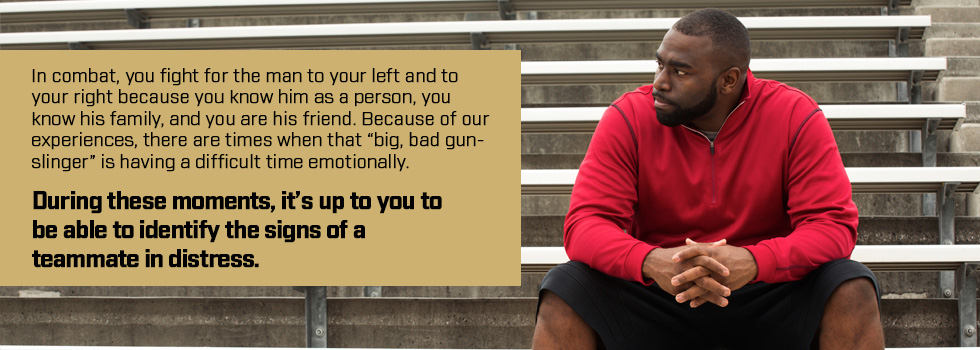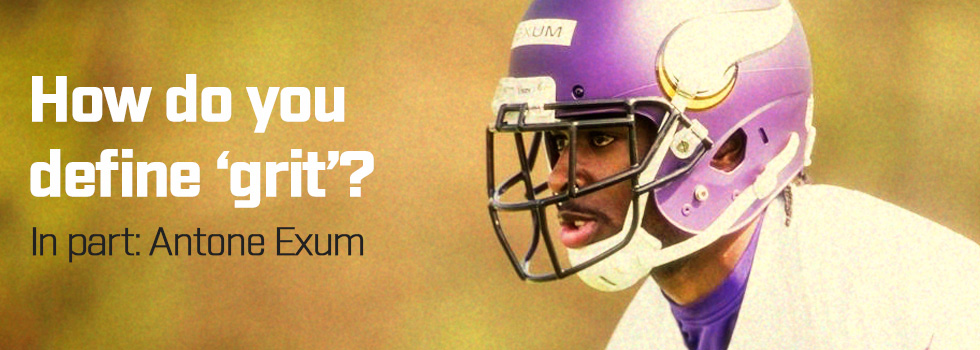
Case Study # 1: The War Fighter
If you don’t know who the guy to your left and right is, why would you fight for him?
Too often the words, ‘family” and “brotherhood” are used when describing the chemistry or pulse of the team. How often do those words ring true? If you are looking to create teams that are successful, emphasizing the importance of authenticity is a good start. When we set out to identify the behavior of teams that “work” we noticed that we could sense a buzz in a team even if we didn’t fully understand what the members were talking about. This buzz suggests that the key to high performance lay not in the content of a team’s discussion, but in the manner in which it was communicating.
During one of our NFL team building events, our human performance psychologists and behavioral experts collected data on the team members individual communication behaviors – tone of voice, body language, whom they talked to and how much, and more. With remarkable consistency, our collected data confirmed that communication plays a crucial role in building successful teams. In fact, we’ve found patterns of communication to be the most important predictor of a team’s success.

How can you fight for the guy next to you if you don’t even know who he is?
Our research has shown that the best predictors of productivity are a team’s energy and engagement outside formal meetings. This is exactly why Mission 6 Zero team events are so helpful in identifying individual and team communication and providing our clients the tools and data they need to accurately dissect and engineer high performance. Building great teams is a science. Mission 6 Zero doesn’t just talk about our combat experiences, we use science to bring those experiences to common ground with our clients. In combat, you fight for the man to your left and to your right because you know him as a person, you know his family, and you are his friend. During intense firefights, I assure you, the warfighter is not thinking about America, their hometown, what religion they are, or what political party the affiliate with. When things get really bad, the warfighter is thinking only of his team. During a true moment of chaos, if properly trained, the warfighter’s biggest fear is to let down the teammate to his left or right. The warfighter knows that his team won’t let him down and no matter what, he won’t let his team down either. He is going to do his job and he is going to do it well. The warfighter fights for his team…because they are truly his brothers.
After an event, I asked one of the participants, Pat*, an all-pro guard, what he thought of the exercise. Pat said, “this is exactly what we need.” I asked Pat, “Why is this exactly what you need?” Pat responded, “Kyle*and I have been on the same team for three years now. The first time I’ve ever said ‘A’ word to him was ten minutes ago.”
Kyle is a backup tight end. Pat and Kyle have been on the same team for three years in a row. As an offensive guard and tight end, they work essentially right beside each other. The first time they ever spoke to each other was during one of Mission 6 Zero’s team events.
Our research has shown that the best predictor of productivity is a team’s ability to communicate with each other outside the workplace. We measure this communication through the level of energy and engagement outside formal meetings. This is exactly why Mission 6 Zero team events are so helpful in identifying individual and team communication and providing our clients the tools and data they need to accurately dissect and engineer high performance. Better communication equals increased productivity. Our clients are better equipped to not only be better at receiving feedback, but also spend more effort helping their teammates improve through effective constructive criticism. An ever learning organization evolves faster than those that do not have the same internal processes to spur growth. Building great teams is a science. Mission 6 Zero doesn’t just talk about our combat experiences, we use science to bring those experiences to common ground with our clients.
After our event, Mission 6 Zero stressed the importance of adjacent unit communication with our NFL client. Mission 6 Zero instructors provided tools and data to our client to help them promote outside formal meeting engagement. As a result, the team improved by two games in the win column as well as enjoyed career best season from players along their offensive line, most notably Pat* and Kyle*. Kyle, especially, increased his productivity by catching five times as many passes the year prior along with several more touchdowns. Kyle admitted that he was more comfortable with his situation and improved communication and social acceptance was a significant factor in the quantifiable improvement.
In combat, you fight for the man to your left and to your right because you know him as a person, you know his family, and you are his friend. During intense firefights, I assure you, the warfighter is not thinking about America, their hometown, what religion they are, or what political party they affiliate with. When things get really bad, the warfighter is thinking only of his team. During a true moment of chaos, if properly trained, the warfighter’s biggest fear is to let down the teammate to his left or right. The warfighter knows that his team won’t let him down and no matter what, he won’t let his team down either. He is going to do his job and he is going to do it well. The warfighter fights for his team…because they are truly his brothers. The warfighter fights out of love.
Additional reading: https://hbr.org/2012/04/the-new-science-of-building-great-teams


 Previous
Previous


